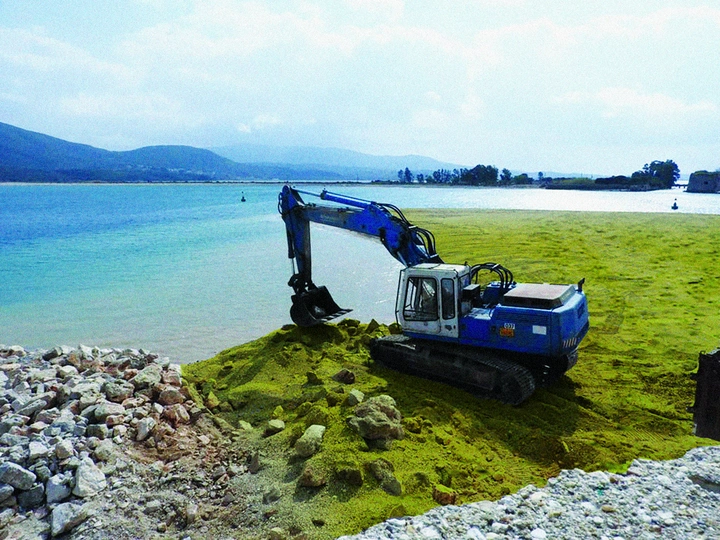Grainscatterers, is what their visa read

I am a writer, geographer, and designer from Greece, holding Master degrees in environmental studies (Yale, 2023), human geography (Harokopio, 2020), and architecture (NTUA, 2017). In 2019 I was a researcher in the “The New Normal” program at the Strelka Institute for Media, Architecture, and Design in Moscow.
The project I propose here is part of my greater research with the working title “Operation Summer Care: Territories of the Stewardship-Hospitality Complex,” which I began developing as a Fulbright scholar at Yale in 2021. This research looks at the overlaps between environmental management and the hospitality industry, revealing structural changes in the way the coastal space is operating in Greece.
Currently based in Athens, I work as an editor for the Yale School of Architecture, preparing a book on the drawings of architect Stanley Tigerman for Yale University Press (forthcoming 2024). I also work as a managing editor for kyklàda.press, a small imprint based in Athens for whom I have written multiple pieces and co-edited two books: "Islands After Tourism: Escaping the Monocultures of Leisure" (2023) and "The Beach Machine: Making and Operating the Mediterranean Coastline" (2022). Previously, I worked as a Teaching Fellow at Yale for two years, and at Strelka for the “Terraforming” program.
With kyklàda.press we were awarded the 2023 Yale Environmental Humanities grant, to carry out research on the geographical imaginaries of the coastline among local people and activists in the Cyclades islands, asking how these can be transformed in visions for a future outside tourism.
My experience in writing includes peer-reviewed papers and chapters, as well as essays for architectural criticism, art catalogs, and general readership magazines. Besides kyklàda.press, my work is published in the Footprint Architecture Theory journal, Šum Journal of Contemporary Art Criticism, Log, CLOG, Cartha, ICON, and Yale School of Architecture’s student journal Paprika.
One dilemma seems to linger over Anthropocene landscapes: Should anthropogenic interventions be minimal and “let nature intact”—even if this fails to address the damage already done—, or should it be bold enough to “assist in healing nature”—even if this implies further meddling with ecosystems? In the touristically saturated Aegean archipelago this dilemma shapes a struggle over the ground: its soil, its appearance, and its minerals are claimed simultaneously by real-estate, food producers, and restoration activists. Thousands of so-called “cave houses” are dug into the earth to host the golden hordes, under the pretext of minimum visual trace. At the same time, an increasing wave of activists attempts to intervene on the landscape to restore traditional practices of micro-climate control or introduce newer technologies of erosion mitigation and carbon capture.
The aim of the proposed project is double: Firstly, to consider these ground-related struggles in tandem and raise awareness about their development in the Aegean islands. Secondly, to weave them together in a speculation that offers a different way to think of the ground as an infrastructure for climate adaptation. To serve its double purpose, the project takes the form of a theory-fiction story. Based on previous ethnographic fieldwork and new interviews with architects and activists working with the landscape, soil, and food, the story re-imagines the relationship with the ground, narrating how three types of geologic materials are carried around and utilized: mixed soils, turned into debris during building excavations; silica, the main ingredient in the sand that nourishes beaches; and olivine, a greenish mineral with high carbon capture potential. The story is told through the “grainscatterers”: environmental stewardship workers, who travel to combine climate activism with vacation. As they labor under the sun, they persistently wonder what our renewed relationship with the shallow earth should be.